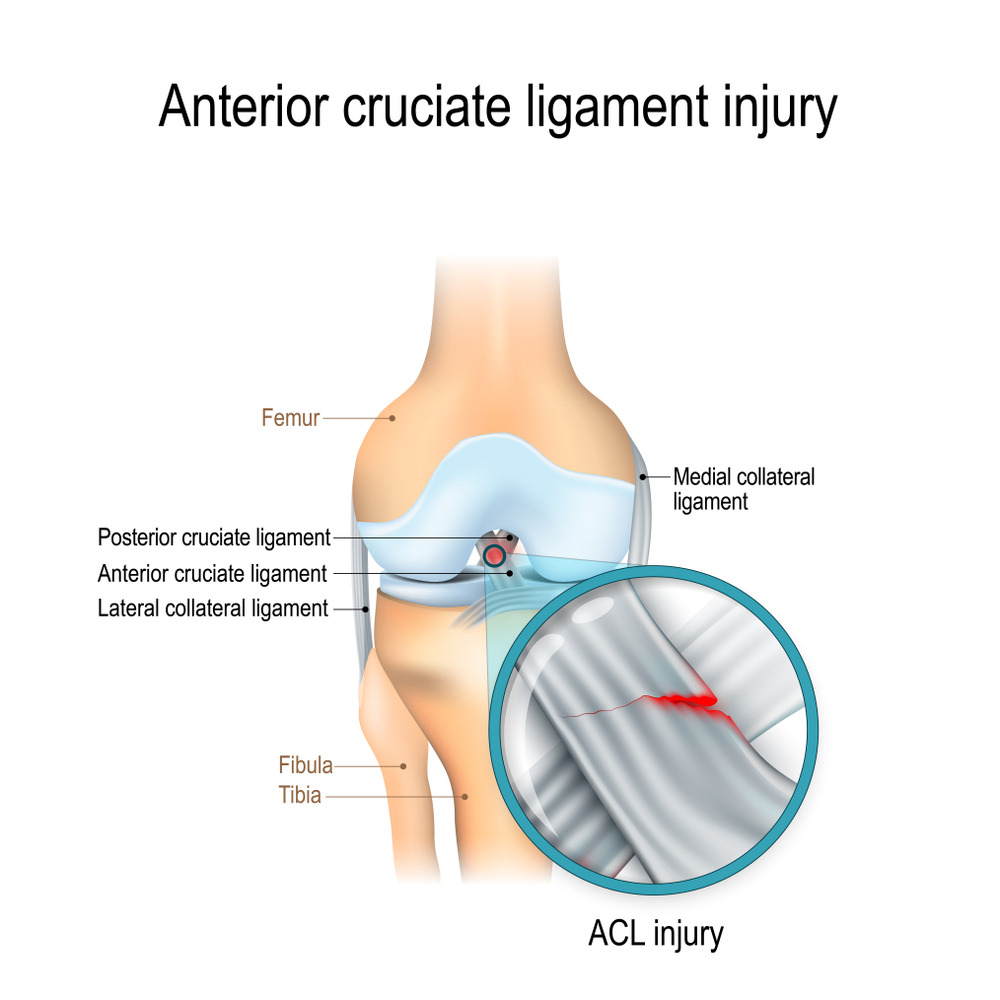Torn your ACL? You’re not alone.
ACL injuries are one of the most common knee issues we see in the clinic—especially in active Australians. But when it comes to treatment, one big question always comes up:
Do I need surgery, or can physio fix it?
In this post, we’ll break it all down:
- What the ACL is
- How it gets injured
- Your treatment options (surgery vs conservative)
- And why physio is essential either way
What Is the ACL?
The Anterior Cruciate Ligament (ACL) is a tough band of tissue inside your knee joint. It connects your thighbone (femur) to your shinbone (tibia) and helps keep your knee stable—especially during quick movements like pivoting, cutting, or jumping.

Key Facts:
- Works with other ligaments like the PCL, MCL, and LCL
- Helps prevent the shinbone from sliding too far forward
- Crucial for balance, stability, and athletic performance
How Do ACL Injuries Happen?
ACL tears often happen during non-contact movements—think sharp turns, sudden stops, or awkward landings. Sports like netball, soccer, basketball, and skiing are high-risk.

Common Signs of an ACL Tear:
- A loud “pop” at the time of injury
- Sudden swelling
- Knee giving way or feeling unstable
- Difficulty walking or weight-bearing
Prevalence:
- Increasing rapidly in active Australians, especially ages 15–30
- Females may be at higher risk due to anatomical and hormonal factors
Diagnosing an ACL Injury
A proper diagnosis involves:
- Clinical tests by a physiotherapist or sports doctor
- MRI scan to confirm the extent of damage and check for associated issues like meniscus tears
Treatment Options: Conservative vs Surgical
Not every torn ACL needs surgery. Your treatment should be based on your lifestyle, activity level, goals, and knee stability.
Option 1: Conservative (Non-Surgical) Management
Best for:
✔️ Lower activity levels
✔️ Minimal instability
✔️ Partial tears
✔️ Strong commitment to rehab
What it involves:
- Structured physiotherapy rehab
- Strengthening the muscles around the knee
- Improving movement control and balance
- Gradual return to sport/work

What the research says:
With proper physiotherapy, many people fully recover without surgery. Some even return to sport—especially if they don’t rely heavily on pivoting or contact movements.
Option 2: Surgical ACL Reconstruction
Best for:
✔️ Athletes in pivoting/contact sports
✔️ Persistent instability
✔️ Associated injuries (e.g. meniscus damage)
What it involves:
- Surgery using a graft (hamstring, patellar tendon, etc.)
- 9–12+ months of post-op rehabilitation
- Gradual return-to-sport testing and training
Surgical notes:
Surgery can restore knee stability and protect the joint long-term, but without proper post-op rehab, results are limited. Surgery is just the first step—not the whole solution.
The Crucial Role of Physiotherapy in Both Paths
Whether you have surgery or not, physiotherapy is non-negotiable.
Immediately after injury:
- Reduce pain and swelling
- Regain range of motion
- Begin light strengthening and stability exercises
Before surgery (Prehab):
- Helps prepare the knee
- Strengthens muscles
- Speeds up post-op recovery
- Patients who complete prehab have better long-term outcomes than those who don’t!
After surgery:
- Rebuilds strength, stability, and confidence
- Corrects movement patterns
- Prevents re-injury
- Guides safe return to sport and daily activity
If no surgery:
- Physio is the primary treatment
- Improves joint control
- Prevents instability
- Gradual return to full function with confidence
Comparison Table: Surgery vs Conservative
Factor: Conservative (Physio Only) | Surgical (Reconstruction)
Invasiveness: Non-invasive | Invasive (requires operation)
Return to Sport: Possible for some | More likely for pivoting athletes
Recovery Time: 6–12 months | 9–12+ months
Role of Physio: Primary treatment | Essential pre & post-op
Long-term Knee Health: Good with full rehab | Good with full rehab
The Bottom Line
The choice between surgery and conservative care depends on:
- Your goals (sport vs lifestyle)
- Your knee’s stability
- Your commitment to rehab
But one thing is clear: Physiotherapy is essential in both options.
It helps you recover stronger, move better, and reduce your risk of future injury. Whether you’ve just injured your ACL or you’re planning surgery, your journey should always begin (and continue) with a qualified physiotherapist.
Ready to Get Started?
If you’ve injured your ACL or have questions about your recovery options, book in with one of our physiotherapists today. We’ll assess your knee, guide you through the decision-making process, and help you take confident steps forward.
Your recovery starts here. Let’s move forward together. Book yourself an appointment with Hawker Place Physiotherapy and we will help you throughout your recovery.


